Ruta told me that people who had escaped the ghetto would come back. So would people who had been taken off to the nearby killing pit in Ponary forest, who had been shot along with thousands of others, buried in mass graves, but who were still alive, would claw their way out from under the dirt and return to the ghetto. So strong was the feeling that death with family was preferable to life alone and on the run. There comes a point where life has dwindled down to a series of resignations, and then the final one—which way to die. In footage I’ve seen of the holocaust by bullet in Lithuania, the Jews actually run toward the killing pit. They may been told to do so, but at some point perhaps one just wants it over and quickly.
For those who succeeded in escaping, there were certain requirements, Ruta tells me. You had to have features that were not stereotypically Jewish; you had to speak the local dialect without a Jewish accent; and you had to be supported by local people. There is no food in the forest. And the other requirement, Ruta pointed out, was that you had to be a communist or a socialist. The ones who died were the religious ones—the rabbis, the learned, the believers. The communists had a support system. There were partisans in the forests of Belarus, about 30 miles from Vilna. If you could get out, and be supported by communists and partisans, who had joined with elements of the Red Army, you had a chance to survive.
I didn’t make it to the killing pits in Ponary forest. Perhaps I didn’t want to go. But I’ve seen footage of them. The Russians, before retreating because of the German invasion, dug pits to hide their fuel but had to flee without filling the pits up. When the Germans advanced and discovered the pits, they realized these would make perfect locations for the removal of Jews from the ghetto when they wanted to kill a large number. In fact 70,000 Jews were killed there. The forest was 8 kilometers (five miles) from the town. There lives could be taken without anyone around knowing.
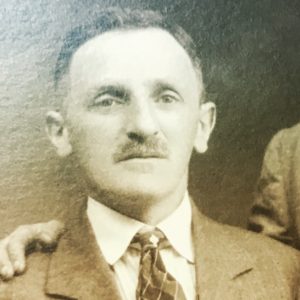
I left Vilnius for Kaunas. My trip to Vilnius was for information, but my trip to Kaunas was for my family connection. Jewish tourism can take many forms, but genealogical foraging is a major one. My cousin Carol Stirk had done much work tracking down my family, but she only traced the lineage of those who had left Kaunas in the 1880’s. Solomon, my grandfather, and his brother Abraham, Carol’s grandfather, had gone to London. According to my father, Solomon left to avoid conscription. I was to learn that in the 1880’s Jews in Lithuania were being drafted, against their will, into the Tsar’s army. Apparently, Solomon’s wife Bella Esther was the daughter of a rabbi. The local constable told the rabbi that there would be a sweep through the shtetl by the army during the night. Solomon hid in a rain barrel as the Army recruiters went through the town, and in the morning he left with his wife. It was a complex process to escape Lithuania. It involved bribing people at the border, waiting for papers, and hoping that all would go right. Solomon probably took the train from Kaunas to a port, and then a ship to Liverpool. Apparently unscrupulous guides would take money for a trip to America but send them to England.
I was thinking of Solomon as I took the train from Vilnius to Kaunas. I knew Solomon loved fishing. Indeed he became a fishmonger in London, then after a stint in New York, went to California where he became a ticket-taker and barker at Sea World. I remember he once caught a big fish in the Pacific and called up to say he was flying to New York to bring the whopper to my father.
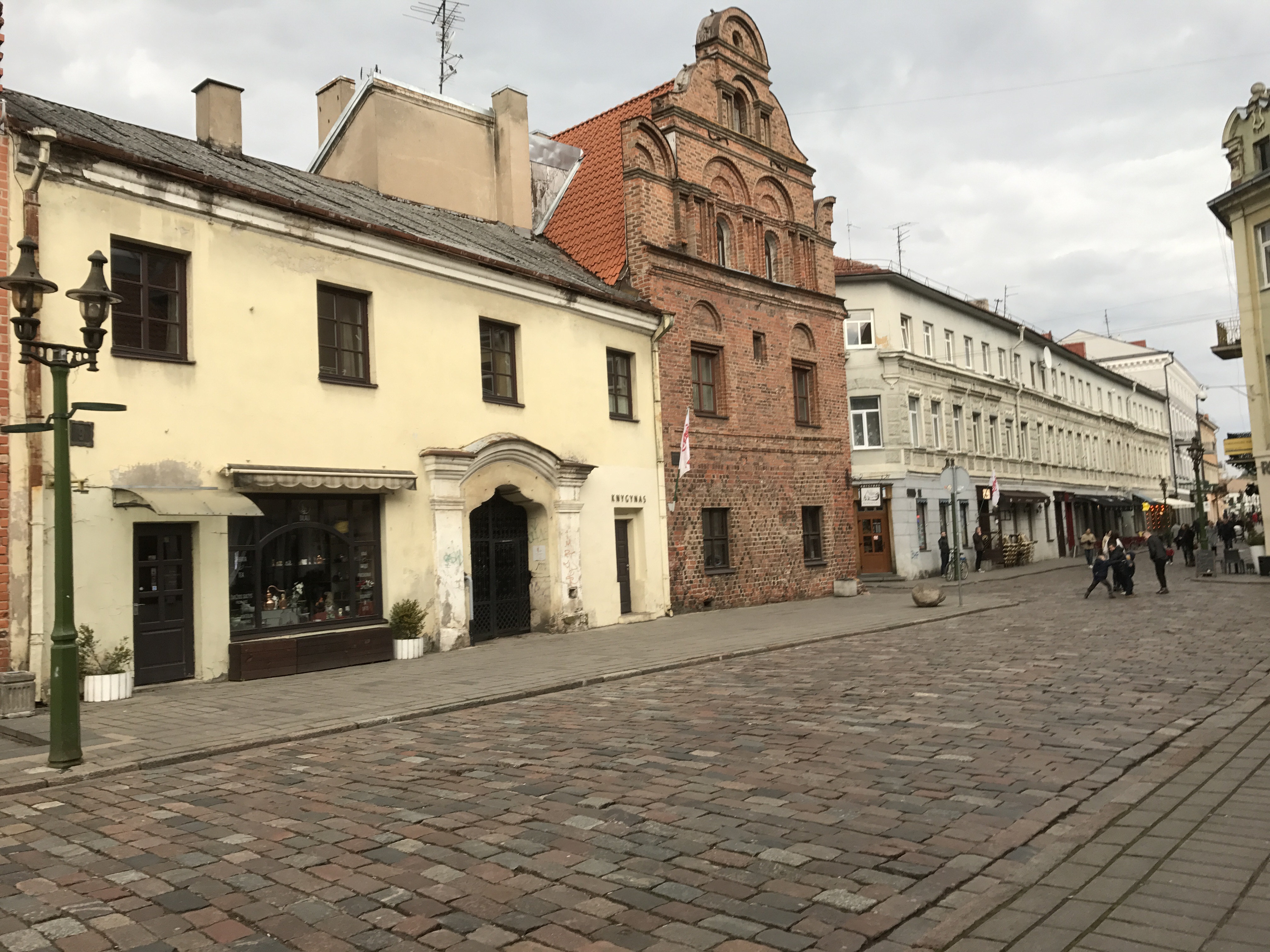
Kaunas sits on the confluence of the Naris and Nemunas rivers. As I walked through the old city, I imagined that Solomon had strolled down those streets, perhaps after fishing in the river. The old city in Kaunas has wider streets than Vilnius’ old quarter. It had its share of Jews living there, and now, like Vilnius, it is a trendy place with its low buildings of various ancient architectural styles. There was less bombing and damage to the city during the war, and because of that the old city is more architecturally consistent. My first feeling, as a tourist, was that I was coming home. Jews had been in Kaunas for 500 years. Jews made up half the population. My grandfather had walked these streets. I never had a place to call home. Each generation lived in different countries, different cities. I could never say, I came from here. Yet, my people came from here. I grew emotional. I liked the old quarter neighborhood. I’m from here, I found myself saying over and over again.
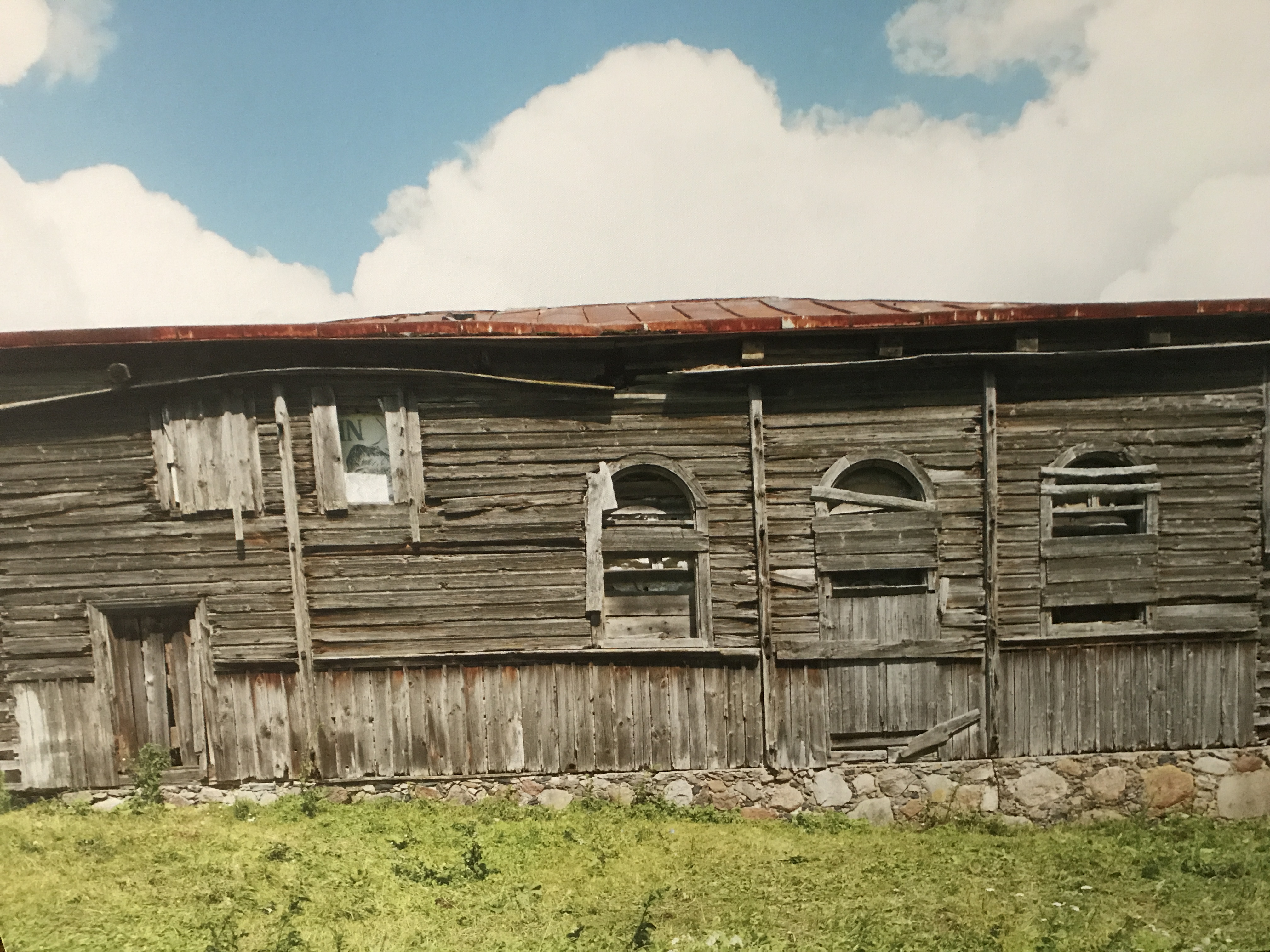
While the Jews lived in this old quarter, so did Christians. But the ghetto was across the Naris River, quite far apart from the rest of the city. Ironically, the bridge that connected the old city and the ghetto was built by a Jewish construction company. Unlike Vilnius, with its medieval narrow winding streets, the ghetto in Kaunas looked like a kind of suburban tract housing, except the houses were a typical rural wooden dwelling with rough clapboard, sometimes painted light green, with low roofs and small yards. The impression is of a shantytown, and even now many of the buildings are in disrepair. Likewise, the synagogues were low, rough barn-like structures. The place is thoroughly depressing, even now. It hasn’t been gentrified—no cafes or candle shops. After my high from strolling through the old city, the ghetto held no interest for me. I didn’t want to say, “I came from there.”
In Kaunas I also hired a tour guide who knew where to go and what to see. Her name is Loreta Pozerskyte, and I found her through Ruta. Like Ruta she is not Jewish. In fact to my knowledge I didn’t meet any Jews in my entire trip with one notable exception that I will discuss later. Loreta met me at my hotel. I was waiting in the lobby of this functional Russian style hotel and Loreta was there but neither of us recognized the other until I called her, as I stood feet away. She hadn’t made eye contact with me, and perhaps that tells you something about her. She was much older looking than Ruta. I guessed she was in her seventies, and she had the drab appearance of a sour-faced grandmother. Without too much ceremony we went to her car, which she was rather proud of. She had announced in a letter to me that we’d be driving in her Skoda. Although ten years old, the car was clearly her prized possession. It was kind of a mess, with the back seat filled with what she called “her library.” Books scattered with other printed materials in random heaps that she would dig into in order to pull out a publication she thought relevant.
We immediately headed to Ariogala, the town from which my grandfather came, which is in the greater Kaunas area. It took about a half hour to get there. We drove through forests and a large agricultural plain. The countryside was lovely in early spring, the grass greened up and the trees barely budding. Rolling terrain with distant hills. I felt completely at home; it reminded me of upstate New York where I have had a farmhouse for 36 years. I had always assumed that my family was urban, but as we drove I realized that Solomon and his forebears essentially lived in deep rurality.
We turned off the highway and followed the signs to Ariogala, Loreta trying to use GPS and calling a local high-school teacher who would guide us to out-of-the-way places that he knew. As she performed these tasks she swerved the car in various directions while speeding up and slowing down erratically and in an unsettling way. As it had been every day I was in Lithuania, it was cold, damp, and raining sporadically. The outer weather fit the inner mood. Ariogala was a small town filled with the same type of wooden houses as in the ghetto. Some were occupied, others not.

Their roofs sagging with the weight of history, they all had a haunted look of disrepair. We stopped at a church and waited for Victor (not his name) to show up. At this point, I was cold, wet, and hungry. And we hadn’t even started. Victor took his time to show up. When he did I saw he was very young—probably in his early to mid-20’s. He had the fresh-faced look of the new high school teacher, and he had been teaching the holocaust in his class this past week. It had been, by some coincidence I hadn’t planned, International Holocaust Memorial Week. He speaks no English and, like so many I met, is rather taciturn. The silent, fresh-faced guide.
We switched cars to his rather beat up old black vehicle that was muddy inside. Victor took us to look at an incline by the side of a narrow paved road that led down to the Dubysa river. Ariogala sits on higher land with its one main street and several smaller side streets. The rise we are looking at on the side of the road seems like nothing, just a steep incline with some trees growing on it. Victor tells us that this was one of the two Jewish cemeteries in the town, but we can’t see it because it is on private property. It looks like nothing, and in the spirit of Jewish tourism, we stare at this nothing trying to make it something.
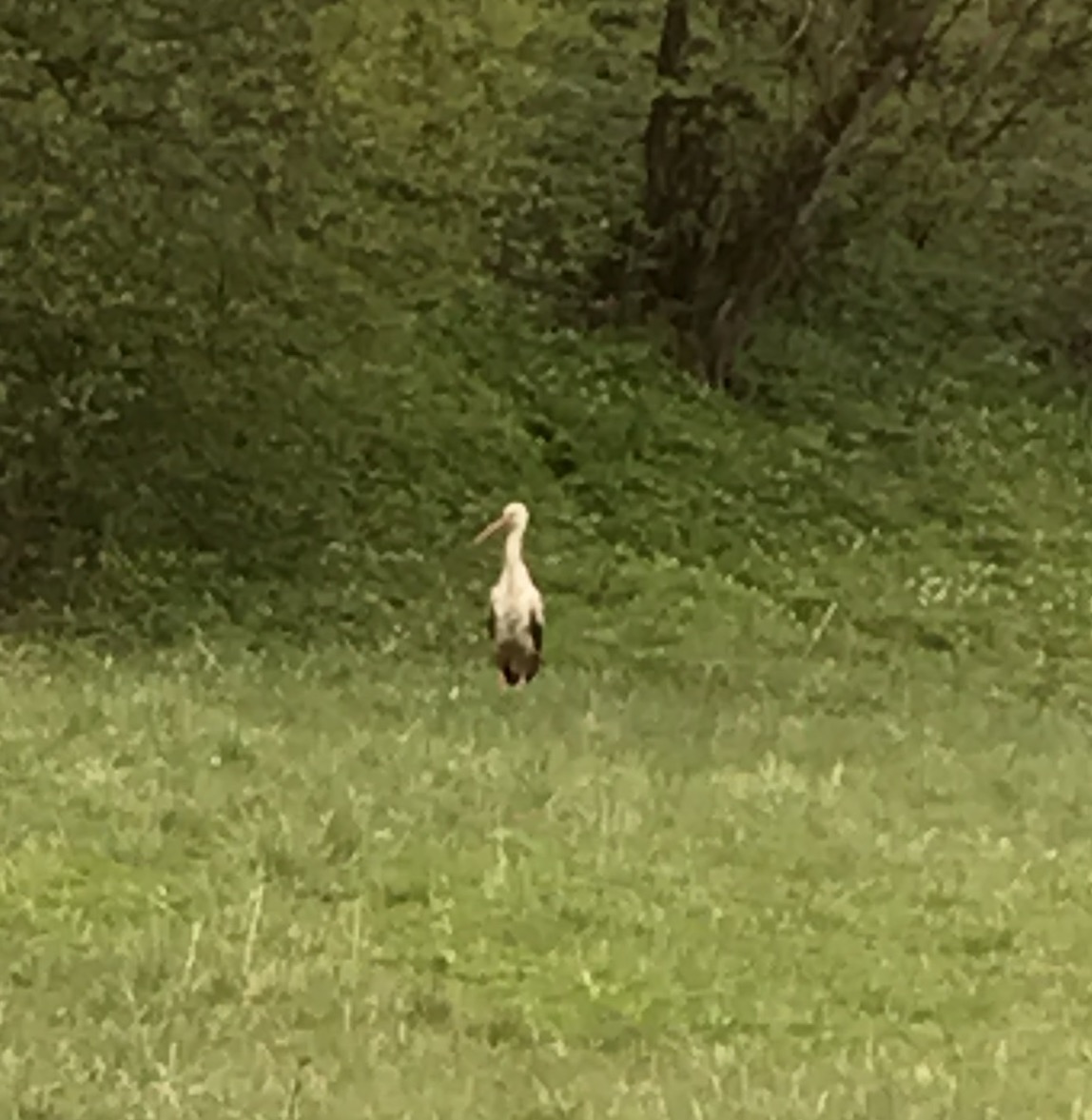
Then we go down to the flat land that runs along the river. The car now plows along a dirt and mud road that is almost impassable. I worry that the car will get stuck in the large puddles that deform the road. The car swerves violently and dangerously as we go along, Victor having to find at least one rut or rising that isn’t pure mud. He does an amazing job. The road, such as it is, ends at a large gate with a “Beware of Dog” sign. In the field a large white stork towers over the low grasses beaking frogs from the water-soaked soil.
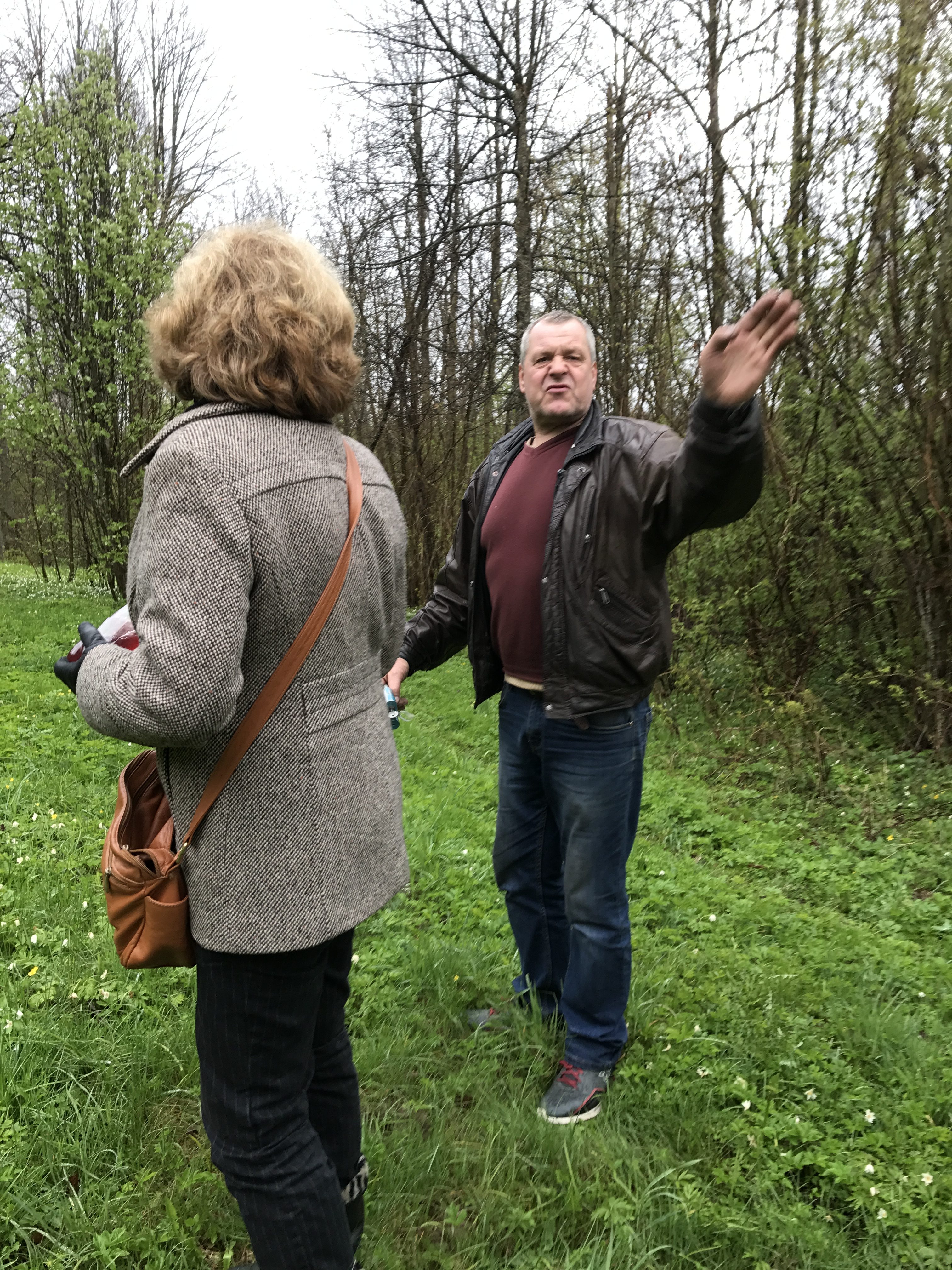
My sneakers are getting water laden, and I’m cold. We stand there for what seems like an hour while Victor calls the proprietor of the land. This Jewish cemetery is also on private property but this owner apparently will allow people to go on his land. Perhaps he is required to do this by the recent laws about memorializing the Jewish presence. Victor tells Loreta who tells me that the dog is dangerous, and we can’t go without the owner tying up the dog. The house is quite far from the gate. Finally, we see a figure leaving the house and approaching the gate. It is hulking man with a face like a side of a ham and enormous hands. He is clearly annoyed at having to perform this hospitality. It’s unclear whether he does it out of obligation to spirit or law. He grumblingly leads us through an open field and into the woods. Beautiful small flowers of white, pink, and blue cluster on the lush and green carpet that also is soaked with the rain. Among these are rue flowers, often called the flower of repentance. I see the flowers but from the farmer don’t feel much repentance. There isn’t a path to speak of so my wet shoes get even wetter. We walk for about ten minutes and then we stop. All along he is speaking to Loreta in Lithuanian. He remains annoyed. I assume he complains that this cemetery is on his land by fortune or misfortune and he has to lead these rich Jews from the US or elsewhere without any benefit to him.
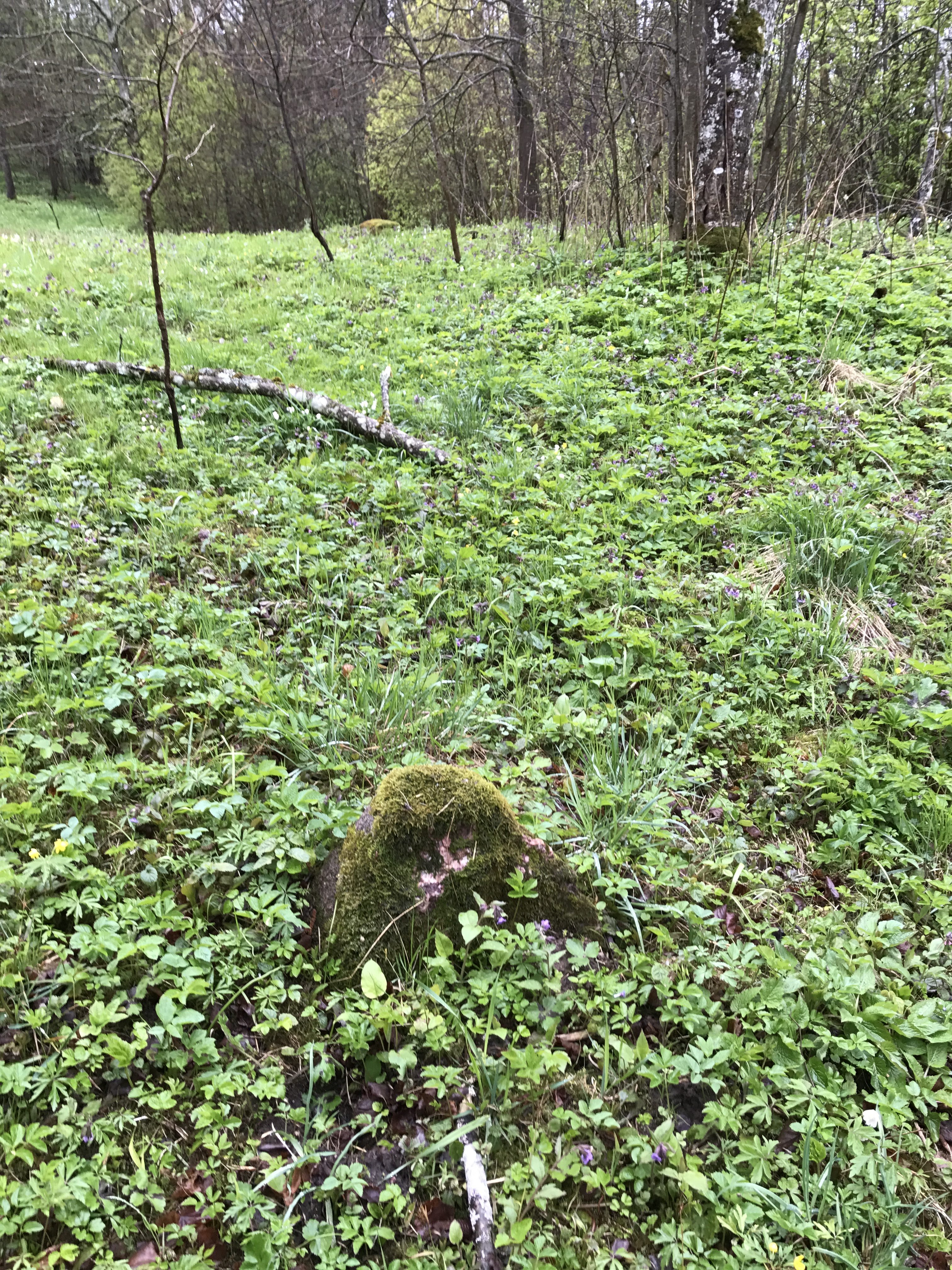
The place where we stop, he tells us, is the Jewish cemetery. If you look around all you see is the ground cover of flowers and greenery. No gravestones to be seen. But if you look closer you see every several feet what looks like a moss-covered rock jutting out of the soil about 4 or 5 inches. It is no more than six inches wide. It doesn’t seem like a cemetery at all. We go on a bit further and we see more of the same. Loreta tells me that some wealthy Jew had donated a fence in the past, but there is no fence there now. Apparently there was a “building” there but all that remains is some broken concrete about four feet by four feet. And then there is one full gravestone lying on the ground, engraved worn Hebrew. What is readable is “mother” and “1903.”
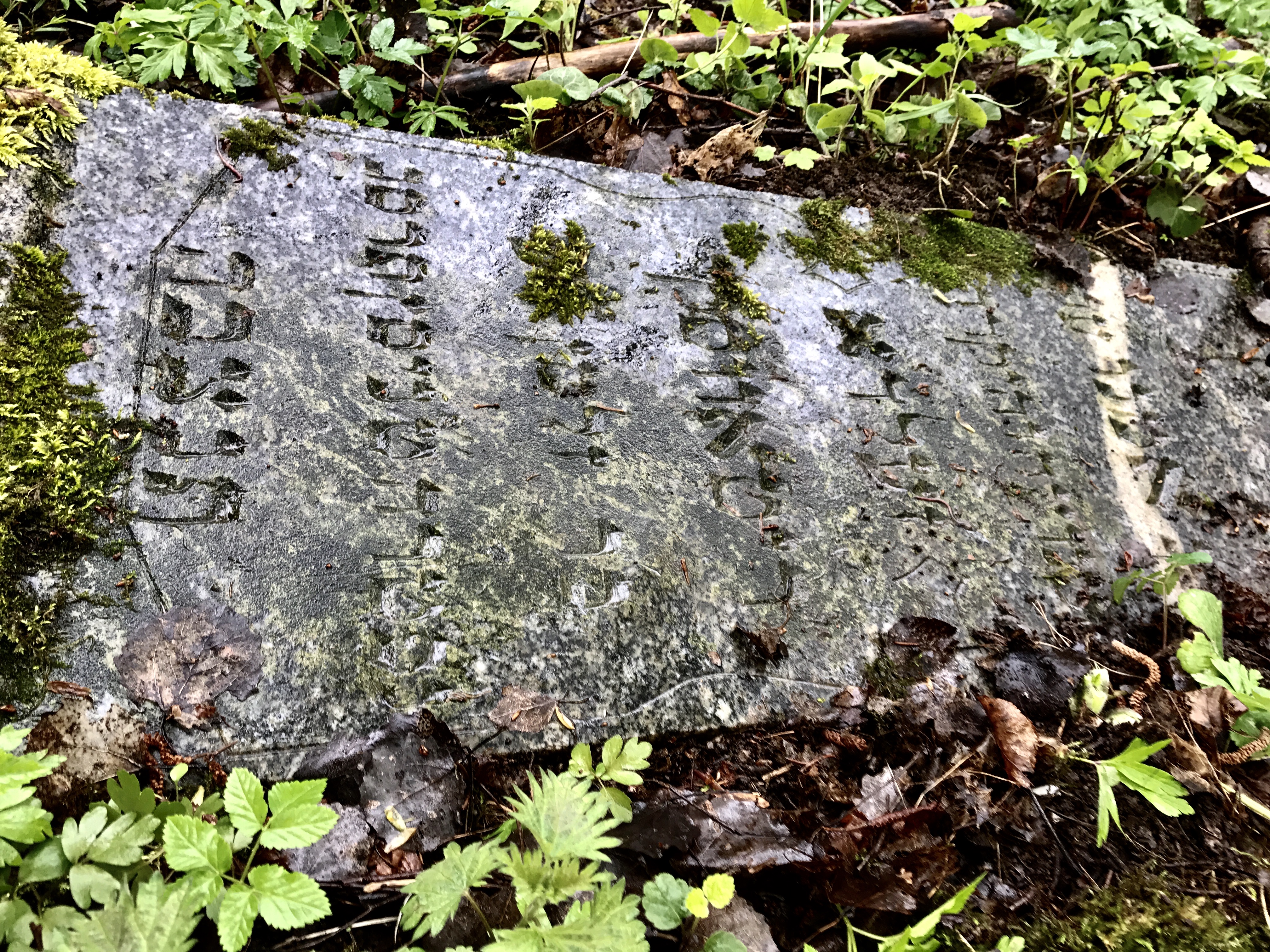
If all the stones had been like that, where were they? No one mentions that the only way the cemetery looks like this is because it was routinely desecrated, tombstones toppled and broken into fragments, so that eventually nature ate up the shame and degradation with its ceaseless appetite for erasing memory. Jewish tourism: thinking of alternative explanations from those of the locals.

